Let's start with the fact that the image consists of the smallest elements - dots or pixels, and, depending on the diagonal of the display (and its physical size), a pixel can have a different size. There are also various pixel shapes - rectangular, square and even octagonal (the latter, however, only happens on plasma TVs). Well, the screen resolution is, in fact, the length in pixels of each side.
In modern smartphones, you can find a resolution of 320x240 pixels. (the most budgetary models for children and the older generation) up to 3840x2160 pixels. (usually flagships). The larger the screen and the lower its resolution, the larger the pixels and the more blurred the image. For example, if you take a 6-inch screen with a resolution of 1280x720 pixels. (HD) and 1920x1080 pix. (Full HD), then in the first case the picture will have less clarity.
But is it worth chasing higher smartphone screen resolutions up to 4K? Yes, there are cases when they are really required - for example, for immersion in virtual reality, where the display is almost close to the eyes and we distinguish the smallest pixels (about smartphones for VR). But with the rest of the content, everything is no longer so clear.
Pixel Density
Here you can not do without the concept of pixel density (PPI) - the resolution of the matrix, which is the main indicator of how clear the device's screen is. PPI is calculated based on the diagonal resolution, its width and height, as well as the diagonal of the matrix in inches.
The more pixels fit in an inch of space, the smaller they will be, and the image will be smoother and clearer; the richer the color reproduction, the better the brightness and contrast. What's more, at high PPI, fonts appear smoother on screen, which improves text readability. For example, PPI at a resolution of 2560x1440 pixels and a diagonal of 5.5 ”will be 534, and if you take a slightly larger screen (5.7”), then at the same resolution, PPI will drop to 515, and the picture will lose clarity.
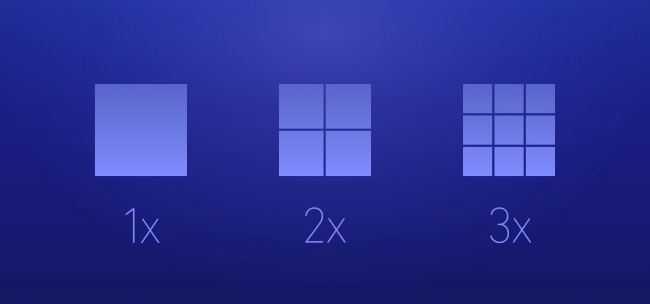
The average user heard about this concept in 2010 with the release of the iPhone 4 with Retina display. Then Apple said that the maximum pixels per inch that the human eye can distinguish is about 300. Columbia University also calculated the pixel density limit for the human eye, and it turned out to be slightly higher - 350 PPI. And in 2014, LG demonstrated three screens - with HD resolution and a density of 269 PPI, with Full HD and 403 PPI, and with QuadHD (its then flagship LG G3) and 538 PPI. And the difference between them was noticeable, the picture on each subsequent screen looked clearer and better, and it was visible to the naked eye.
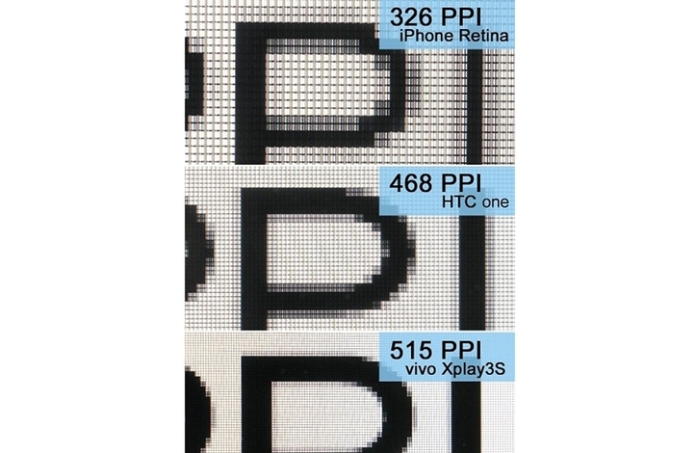
Raymond Soneira of DisplayMate claims that a person with perfect vision can "see" density up to 600 PPI, which makes the idea of releasing smartphones with a resolution of 4K and 800 PPI not so crazy. Now the pixel density of modern flagships has already exceeded 500 PPI, but at some point, with the naked eye, users will no longer distinguish the advantages of a small, in fact, high-density smartphone screen.
Smartphones with the sharpest screens
We did not trust the word of the manufacturers and independently calculated the pixel density for each of the smartphones. As it turned out, here the vendors did not exaggerate their merits and indicated the correct values (corrected for rounding to the nearest integer), although, for example, many got excited with "frameless" (in our material).
Samsung Galaxy S9
Samsung Galaxy S9 has become a leader in screen clarity - its pixel density is 568 PPI. Due to the smaller diagonal (5.8"), he bypassed his "brother" S9 +, which has the same resolution (2960x1440 pixels), but a larger diagonal (6.2"), and therefore received 531 PPI. The smartphone is made in a "frameless" design and, fortunately, without the now popular "bangs" - this is a plus for the manufacturer.

Users note that the display colors are really very juicy (this is still a SuperAMOLED proprietary matrix), brightness and contrast are at a high level. It behaves well in the sun, does not glare and remains readable. By the way, the screen resolution, if desired, can be reduced by increasing the battery life.
LG G6 () is only slightly behind the leader with a result of 565 PPI (diagonal - 5.7", resolution - 2880x1440 pixels). LG called its screen FullVision, indicating that the user will have more space for watching videos, web pages and text. All data can be divided into two windows - in LG smartphones, this function is supported by a large number of applications. Although IPS-matrix is considered less bright than AMOLED, its quality was still positively evaluated by users. There is support for Dolby Vision and HDR 10.
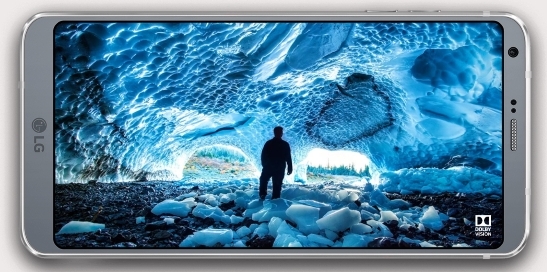
By the way, the LG G7 ThinQ was recently introduced, which boasts a higher resolution - 3120x1440 pixels. But due to the increase in diagonal to 6.1” the pixel density of its screen is slightly lower - 563 PPI.
Although many have questions about the strategy of HMD Global, it turned out to be quite successful and ranked third on the list with a result of 554 PPI. Even though its screen has a lower resolution (2560x1440 pixels) than that of smartphones that are in the top below, it wins due to a small display diagonal - 5.3 inches.
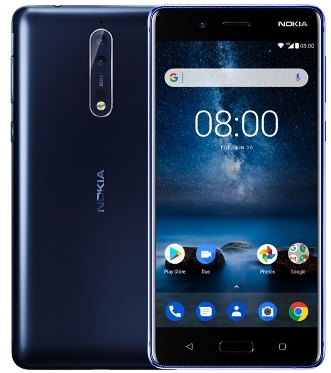
The design, however, is not frameless at all - there are very noticeable stripes at the top and bottom of the display. But we liked the quality of the screen - it is bright, contrasty, with natural color reproduction and good viewing angles. And in the evening, you can activate the night mode so that your eyes do not get tired.
vivo xplay 6
Vivo Xplay 6 is far behind the top three in terms of performance - it has 538 PPI. But for the fact that he got here, we should thank the average screen diagonal (5.46”) and high resolution (2560x1440 pixels). In appearance, it immediately becomes clear who the designers drew inspiration from - the display, curved at the edges, repeats the Samsung Galaxy Note 7. And the AMOLED matrix itself is also from the South Korean manufacturer, so it is not surprising that the screen produces a high-quality picture.
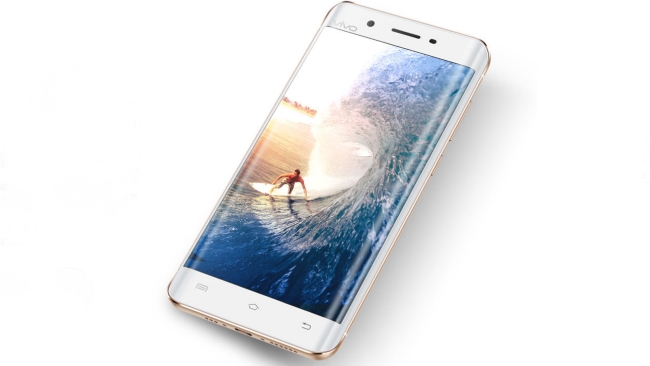
The curved edges of the screen are made for a reason - there is a panel that is completely similar to Samsung's Edge. The display resolution can also be lowered to Full HD to increase autonomy, but the settings do not allow you to calibrate the colors.
Google Pixel 2XL
Another "clear smartphone" is last year's interesting, but not too popular flagship Google Pixel 2 XL. It has a large diagonal (6") and a high screen resolution (2880x1440 pixels), and the pixel density is 537 PPI. A POLED matrix manufactured by LG is installed, which in some places is inferior to SuperAMOLED from Samsung, but there is no inherent "acidity" of shades inherent in the latter. However , if you deviate from the right angle, then the colors begin to invert and go into blue.
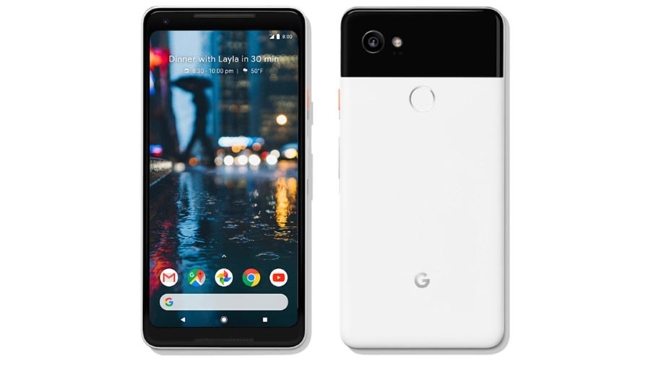
Also at the very beginning of sales there were complaints about graininess and the appearance of artifacts, but the manufacturer claims that software updates should have fixed this. Many more users are unlucky, and in some places the screen of their devices goes pink.
The second LG smartphone on our list, the LG V30+, has exactly the same pixel density (537 PPI). It, like the Google Pixel 2XL, has a diagonal of 6 "and a resolution of 2880x1440 pixels. The matrix type is again POLED (On-Cell touch). But, apparently, LG still makes better displays for its flagships.
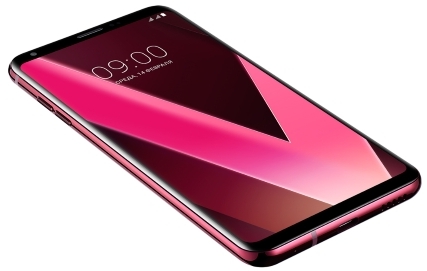
The screen here is bright, with high-quality anti-reflective coating and balanced colors. There are separate color display profiles - for surfing the Internet, watching movies, reading books. HDR is also supported, and the Always-on-display feature, which is present on all modern OLED screens, has different settings: turn-off time, brightness, content display, etc.
HTC U11 Plus
And the third smartphone in a row with a 6-inch screen, a resolution of 2880x1440 pixels and a pixel density of 537 PPI is the HTC U11 Plus. The proprietary Super LCD 6 matrix, according to the manufacturer, provides natural color reproduction. Such a screen is very popular with those for whom Samsung displays are too bright. And for lovers of juicy shades, the screen will seem too faded, but the eyes do not get tired of it.

The smartphone has an analogue of the Always-on-display function, but since this is an LCD matrix, only the clock and information icons will be displayed, and the battery will run out much faster. An interesting mode is "Gloves" with increased screen sensitivity, as well as the ability to select a color profile and separately change the settings in it.
There is support for HDR10 dynamic range, but only at the hardware level. With new system updates, it should also appear programmatically.
Tonino Lamborghini Alpha one
Together with the next smartphone on the list, Tonino Lamborghini Alpha one, we are invited to the premium segment, offering, along with an impressive appearance (liquid metal case and genuine leather trim), decent performance. A diagonal of 5.5 inches and a resolution of 2560x1440 pixels create a pixel density of 534 PPI.
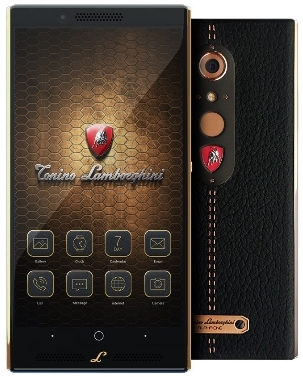
The AMOLED-matrix demonstrates good contrast and saves battery power, the brightness margin is also decent. As with all AMOLED screens, colors do not invert at different viewing angles. You can play around with the color temperature and saturation settings if you like.
Huawei P10 Plus
Huawei P10 Plus has the same screen characteristics as Tonino Lamborghini (except that the matrix is IPS), and therefore demonstrates 534 PPI in the same way.
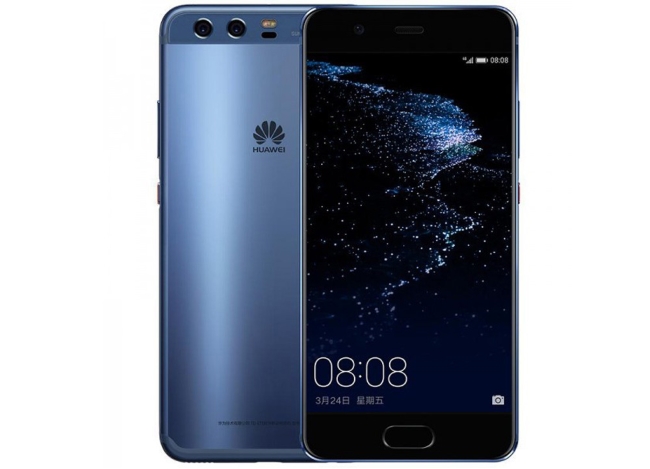
The smartphone was, and we noted that the display has good brightness and a decent anti-reflective coating - it can be comfortably used in the sun. Viewing angles are wide, and you can adjust the color temperature yourself or choose a preset profile.
ASUS ZenFone AR ZS571KL
Well, the ASUS ZenFone AR ZS571KL smartphone is specially “sharpened” for virtual and augmented reality, and therefore it has a large and clear screen with a diagonal of 5.7 inches and a resolution of 2560x1440 pixels, and its pixel density is 515 PPI.
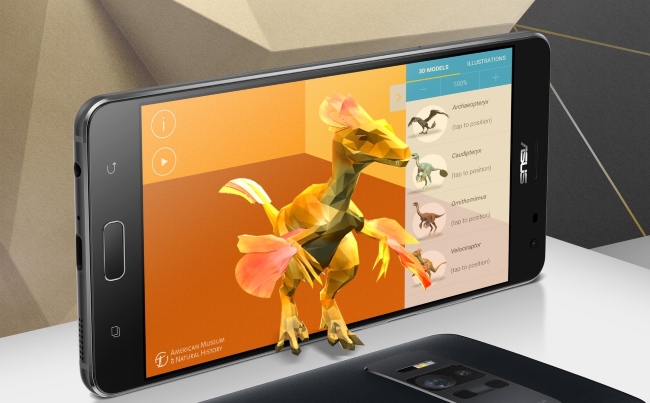
From above, the screen is covered with 2.5-D Gorilla Glass 4. You can turn the device into a VR helmet using its own packaging - it opens, a smartphone is inserted there - and forward, towards virtual adventures. True, the VR mode drains the battery very quickly - as, indeed, games.
| Estimated PPI | Claimed PPI | Display | Price | |
| Samsung Galaxy S9 | 567,53 | 568 |
Super AMOLED 5.8" 2960x1440 pix. |
i 59 990 |
| LG G6 | 564,90 | 565 |
2880x1440 pix. |
from i 37 990 |
| Nokia 8 | 554,19 | 554 |
2560x1440 pix. |
i 29 990 |
| vivo xplay 6 | 537,95 | 538 |
2560x1440 pix. |
from i 35 990 |
| Google Pixel 2XL | 536,66 | 537 |
2880x1440 pix. |
from i 48 990 |
| LG V30+ | 536,66 | 537 |
2880x1440 pix. |
i 59 990 |
| HTC U11 Plus | 536,66 | 537 |
2880x1440 pix. |
i 49 990 |
|
Tonino Lamborghini Alpha one |
534,04 | 534 |
2560x1440 pix. |
i 149 000 |
| Huawei P10 Plus | 534,04 | 534 |
2560x1440 pix. |
from i 32 190 |
|
ASUS ZenFone AR |
515,3 | 515 |
2560x1440 pix. |
i 59 990 |



